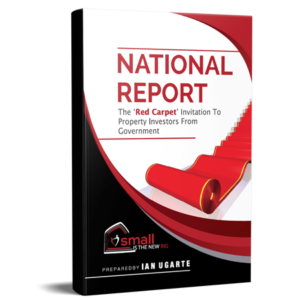We Aussie’s are obsessed with our dream family homes. But when we tuck into bed each night, there are estimated to be 13.5 million empty bedrooms, and yet, at least 1.55 million Australians are facing housing stress. Could your humble spare room be the answer to providing affordable housing and earning you extra cash. Forget Airbnb. Read my interview with the Sunshine Coast Daily‘s Scott Sawyer below.
How the humble spare room could end homelessness.
By Scott Sawyer, Sunshine Coast Daily, September 14th, 2020.
The humble spare room could hold the key to unlocking housing for the homeless and others financially frozen out of the market.
Property expert, educator, and founder of the Australian Housing Initiative Ian Ugarte said Sunshine Coast Council was dragging its heels on a solution.
Mr Ugarte said Brisbane City, Gold Coast and Noosa councils had all progressed their rooming accommodation policies, enabling established homes to be easily set up as formal share homes, with individual leases for each room, communal areas and upgraded fire and safety systems.
Mr Ugarte, a Diddillibah resident, said he was in contact with Sunshine Coast Council about its policy, and with a new planning scheme looming, he was hopeful progress could be made.
He said one of the main issues was trying to cut red tape and make the process smoother to set up share homes, with private certification in place in other councils, and reducing what he said were prohibitive costs and approval processes to transition a house into a share home.
Mr Ugarte said he was running share homes successfully around the country, and the facilities were catering to mostly singles and couples, professionals, divorcees and those saving to buy a home of their own.
FIND OUT MORE about our mission to help investors tap into the growing demand for affordable housing HERE.

He said it was taking pressure off the government, which could then focus more of its efforts on social housing, for those in the lowest socio-economic brackets.
“People (in share homes) end up being friends for life,” Mr Ugarte said.
A Sunshine Coast Council spokesman said the organisation’s Environment and Liveability Strategy set a target to increase the diversity of affordable living options by 2041.
“The community will be invited to be involved in the development of the next Sunshine Coast Planning Scheme which will seek to ensure that new development includes a diverse range of housing choice to meet the different needs of our growing community,” the spokesman said.
The spokesman said council remained committed to achieving its 2041 target, and it would “consider all options compatible with the intended character and amenity of the neighbourhoods in which they are located”.
“New and emerging housing models will be one of many considerations taken into account as part of the development of the next Planning Scheme,” the spokesman said.
Mr Ugarte said the share home model could be a huge benefit to domestic violence victims transitioning out of abusive relationships, and help address housing affordability issues in the region.
He said the Coast was one of the most unaffordable regions globally, and the co-tenancy model was not effective.
“No one loses out of what we do,” he said, pointing out the owner-investor increased their returns with multiple leases, while tenants were able to save one-third to half of regular weekly rent.
He said it also helped owners avoid negative gearing, which delivered more benefits to government.
FIND OUT the real truth about negative gearing and why you should avoid it HERE.

Property guru Michael Matusik, in one of his recent market assessments, said the coronavirus pandemic had reignited the debate about product size.
He said given the cost was much more to build and supply small residences compared to large housing floorplates, it made more sense to provide more homes that could be shared.
His analysis found there were currently about 10 million households in Australia which held about 13.5 million spare bedrooms.
Mr Matusik said more should be done to explore housing incentives and relaxing regulations to maximise the use of existing homes.
He said it would help if the town planning focus shifted from dwellings per hectare to people per hectare, as it would do more to capitalise on existing infrastructure and under-utilised housing stock.
FIND OUT MORE about how you can convert your unused rooms or underperforming investment properties into high yield micro-apartments aimed at the affordable housing market by joining my FREE LIVE WEBINAR HERE.





